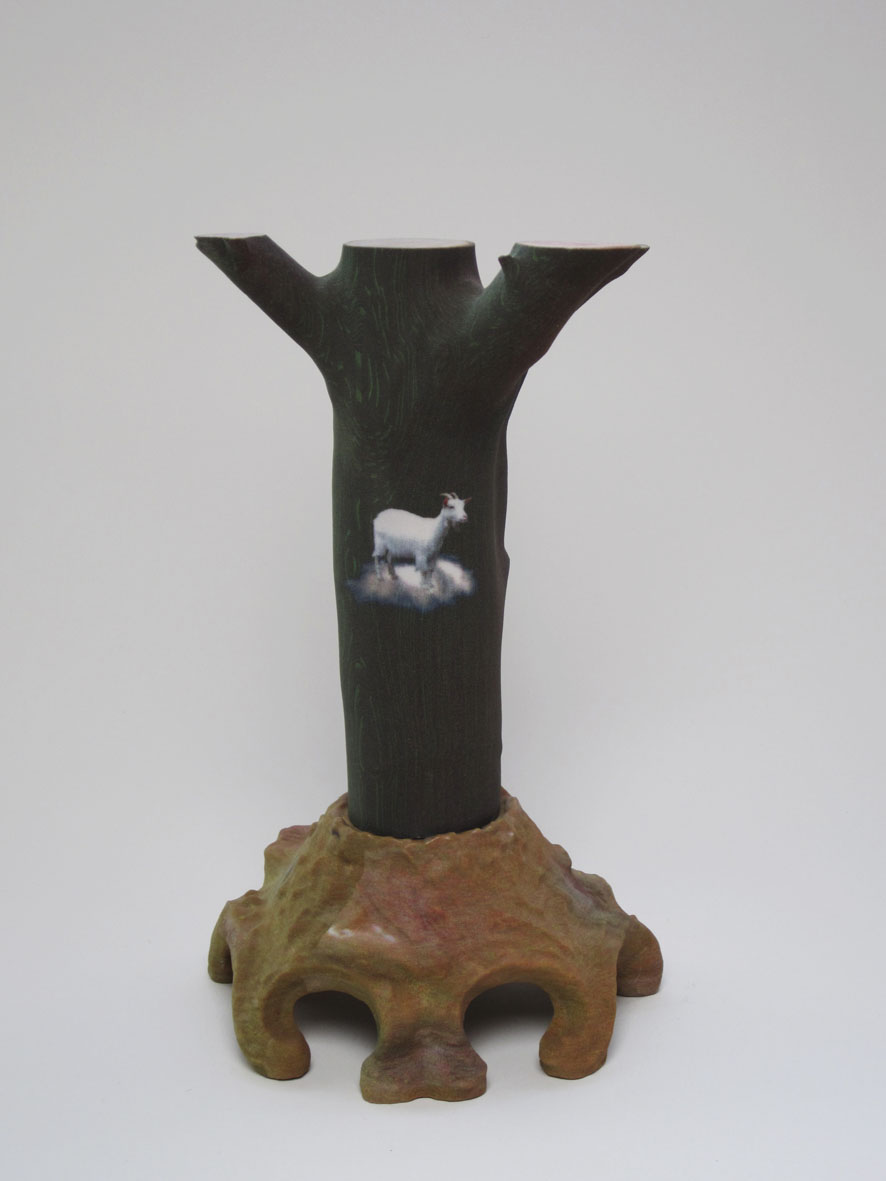In his practice, Conor Wilson explores the relationship between nature and culture through the concepts of ‘the wild’, ‘the domestic’ and ‘the pastoral’, while expressing his own particular take on the world. He strives to produce work that is relevant to its time, yet that also emphasises the value of the handmade in a post-industrial society.
Garden (2010), a work of exquisite texture and detail, is a 3D-printed object that Wilson made in collaboration with the Centre for Fine Print Research, University of the West of England, Bristol. The piece is inspired by Infants with Goat (circa 1770), a William Cookworthy porcelain group that belongs to Bristol Museum & Art Gallery’s collection. For Garden, Wilson has reinterpreted the main features of the eighteenth-century figure group: a tree backing the figures, the rococo style base, and the representation of the goat. The main elements of Garden are 3D copies of real objects: the trunk is a copy of a laurel tree’s branch from the artist’s garden, while the base is a direct copy from an existing clay object, made from clay dug from beneath the tree. However, the image of the goat was sourced from the Internet and the cloud taken from a photo of the sky above the garden. Garden plays with the question what is real and what is artificial, what is clay and not clay, and hints at the myths of sacred and profane love which inform the eighteenth-century genre.
Garden is the first 3D-printed work to be added to Bristol Museum & Art Gallery’s collection, and in fact the first piece produced by the Centre for Fine Print Research to be represented in a museum collection. As the work directly engages with a historic piece in the collection, Infants with Goat, it manages to reactivate Bristol’s holdings.


